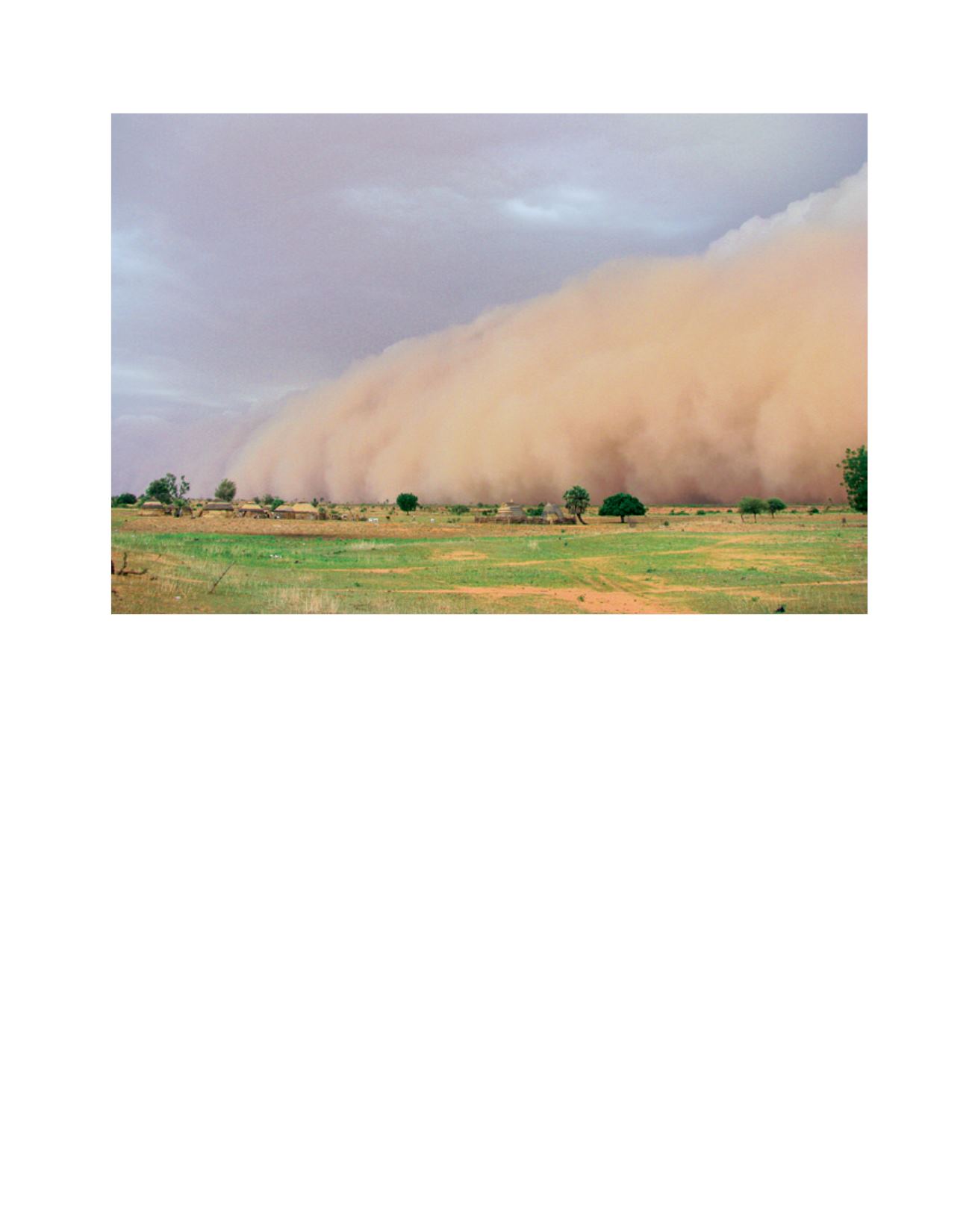

[
] 125
Image: Dr K. Ikazaki
Sandstorm, a cause of wind erosion
established the Irrigated Land Reclamation Fund and
started a state programme to allocate funds for the construc-
tion or reconstruction of related facilities, repair works,
purchase of machinery and equipment and water-saving
technologies. While these activities work well in reduc-
ing salinization, the continued use of excessive amounts
of irrigation water in actual farmlands expose them to
greater risk of salinization and rising groundwater levels.
This farming activity renders the desalinization measures
ineffective. Therefore, JIRCAS started a research project
which was supported by the Government and the Farmers’
Council (FC) of Uzbekistan. It was focused on farmers’
understanding of salinization and what countermeasures
can be applied. Studies and experiments have been imple-
mented to improve the technical aspects and to verify the
effects of the measures on actual farmers’ fields in Syr-darya
province, where the salinity-affected area is large.
As a result of the project, a guideline
2
titled ‘On-farm miti-
gation measures against salinization under high groundwater
level conditions’ was published in February 2013. The guide-
line was translated into Russian and Uzbek languages, with a
simplified popular version in addition to the original one. It
explains intelligibly to farmers the following topics: under-
standing salinization; monitoring salinization; water-saving
irrigation; low-cost land levelling; drainage maintenance;
crop rotation; and trial calculation of financial conditions.
The first topic describes the mechanism and classification of
salinization. The second discusses the necessity of monitor-
ing groundwater, the farmers’ monitoring method and the
results of monitoring in the field. The third shows the modi-
fied furrow irrigation methods and their effects. The fourth
explains the necessity of land levelling and the farmers’
efforts in pre-levelling work. The fifth points out the impor-
tance of drainage maintenance and the farmers’ role in the
maintenance of drainage facilities. The sixth enumerates the
summer crops to be cultivated to generate funds for the miti-
gation measures, as well as the green manure crops for soil
fertility improvement. The last topic presents a trial calcula-
tion for the costs and benefits of introducing each measure.
The guideline has been disseminated by the FC in relevant
seminars in Uzbekistan.
Currently, JIRCAS is working on the establishment of
methodologies for efficient groundwater control, such as
improving of the management of surplus infiltration water
and monitoring soil and groundwater levels to estimate the
introduced methodology.
Improving soil fertility in the Sahel
The Sahel of West Africa, the southern periphery of the
Sahara desert, is the most marginal land for agricultural
production in the world. The soils are very sandy and
infertile and the land is frequently afflicted by devastat-
ing droughts, pests and diseases. Indigenous systems, like
corralling and fallowing, were for a long time sufficient
L
iving
L
and
















